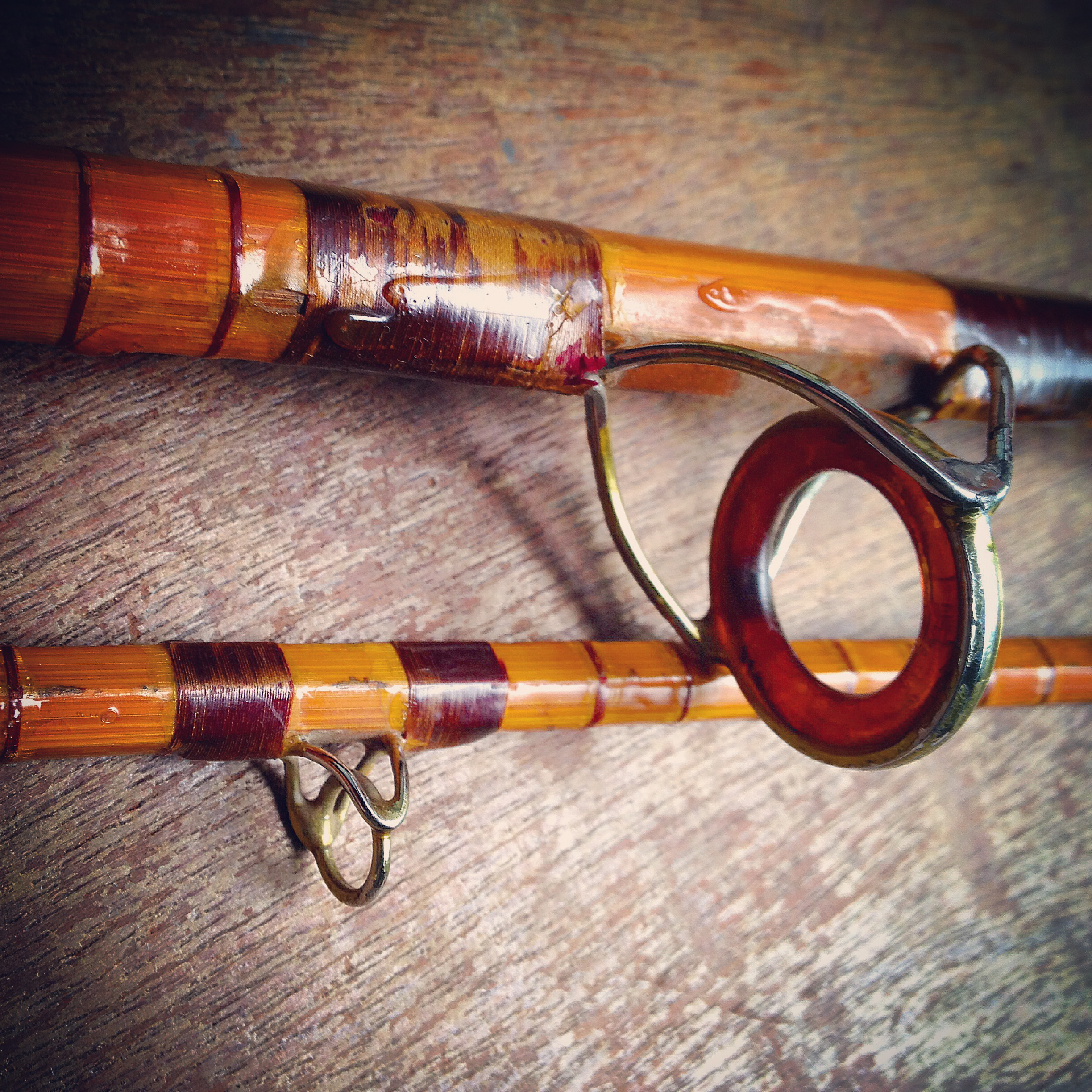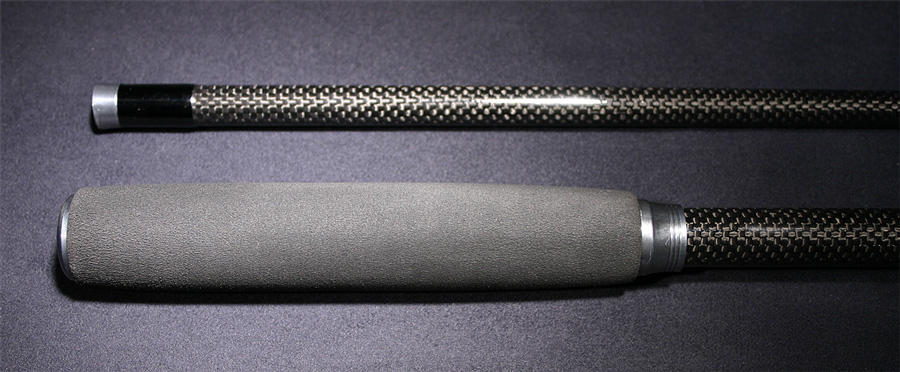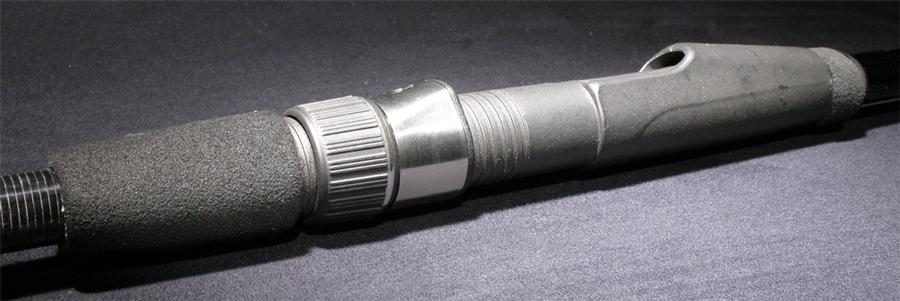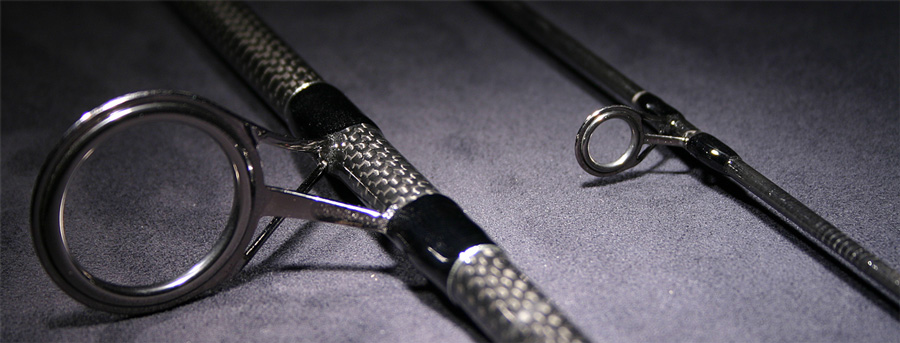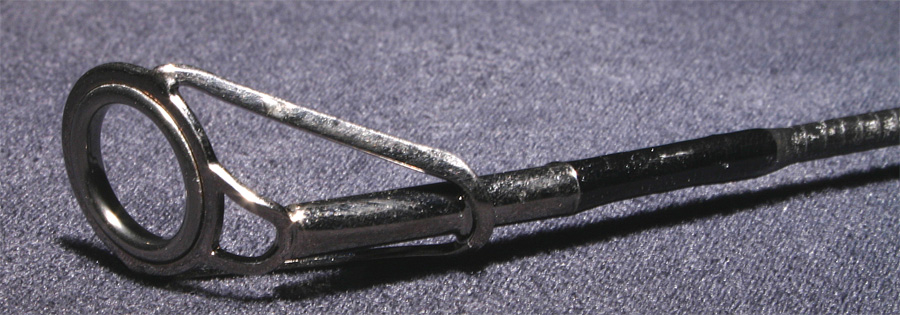A Little Rod History and Purpose Built Carp Rods
Before the invention of the ‘split cane’ rod natural wood was the only choice of material available for building a fishing rod. The likes of Isaac Walton fished with 19ft rods made of Ash, Chestnut, Oak or Hazel that would have been very heavy and difficult to maneuver. However, the early pioneers proceeded with the tools available until eventually Greenheart became the wood of choice, as it possessed both strength and flexibility and could be carved to a fine point or ‘taper’. To lighten the rod and increase handling some of the sections would have been hollowed by passing a hot wire through the center.
It was likely the early 19th century when the ‘split cane’ rod was developed. One of the first documented makings of such a rod came from the USA in 1845. Samuel Philippe, a violin maker from Pennsylvania, used his knowledge and skills as a master-craftsman to split cane and then laminated the 4 pieces together.
Eventually the cane rods would be split into 6 pieces, planed to a taper and laminated. This saw the birth of the split cane rod.
Likely the most famous and original purpose built carp rod would be Richard Walkers’ MKIV made of split cane in the 1940’s. Richard built this rod out of necessity, as there were no purpose-built rods available at the time capable of landing the large and powerful fish that he pursued. He made about 8 of the models himself from hand before they were taken to B. James of Ealing in England for production. The first 15 rods were hand signed and the only rods made to the exact original specifications. There are only 5 known to still be in existence. The Richard Walker MKIV rod was incredibly popular among Carp Anglers in the U.K for many years and it wasn’t until the 1960’s that things began to change.
By the 1960’s Carp rods were being manufactured in Fiberglass. The first Fiberglass rods were built to the exact action specifications as Walker’s MKIV and were 10 feet in length with a 1-3/4lb test curve. This was eventually ‘stepped up’ to a 2-1/2lb test curve rating until the mid-70’s when Anglers started to request a rod that would cast further distances and so an 11ft 2-3/4lb test curve fiberglass rod was produced.
In 1978 Carbon Fiber (Graphite) was introduced into the rod manufacturing process. Unfortunately, the first prototypes all broke as the materials used did not contain resins but eventually the process was perfected and the graphite rod was born. The rod is manufactured through taking the carbon fiber material that is cut into shape and then rolled onto a steel mandrel (the taper of the mandrel will determine the taper of the rod). This is then heated to great temperatures and allowed to cool. The steel mandrel is then removed, which takes 7 tons of pressure, and the hollow graphite blank is left. This process has revolutionized the modern carp rods and in the mid 80’s master rod builders such as Dr. Steve Harrison and Nick Buss started experimenting with the carp rod and its function and design which brings us to the present day.
Currently there are many excellent rod manufacturers including a few based in the US these days and the number of high quality rods available for a reasonable amount of money is increasing every year. With the introduction of new ideas and materials from the many carp rod manufacturers, things will only get better!
Rod Actions
Modern day carp rods are extremely strong and very light. It is important to use the ‘right tool for the job’ or the correct rod for the correct application and though there are some excellent rods available to the modern-day carp angler, there is not one rod that will be ideal for every angling situation…. though some come very close!
Each rod will have its own individual ‘feel’ and ‘action’. This can be broken down into four categories:
• Through action or ‘slow taper’, ‘parabolic’.
• Medium action or ‘medium taper’.
• Fast Action or ‘Fast taper’.
• Specialist.
+ THROUGH ACTION
In general, the above descriptions are given to the ‘softness’ of the feel of the rod. A ‘softer’ rod would have a through action meaning that when playing a fish, the entire rod will curve all the way down ‘through’ to the butt of the rod.
These rods are great for playing fish at very close range and absorbing the power of a lunging fish but have very little power to control a fish at distance. Additionally, they have a limited casting ability as the rod takes far less pressure to fully compress.
This type of rod is also sometimes said to have a 'Parabolic' Action.
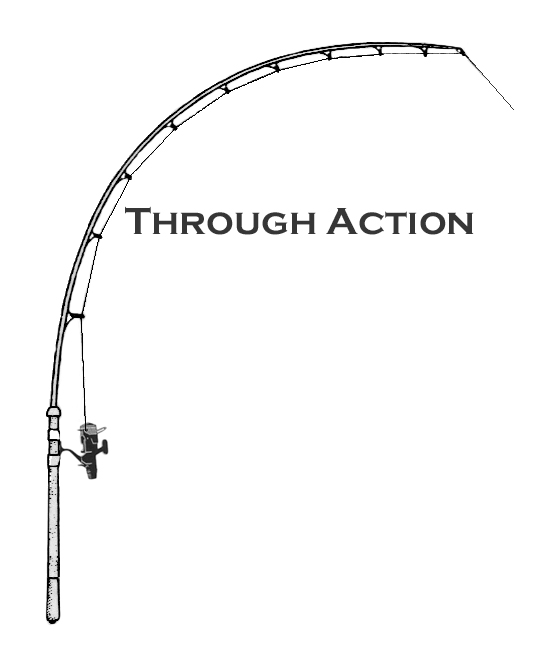
+ MEDIUM ACTION
The Medium action rod is probably the most common 'action' of Carp rod as a generalization.
They have good power in the butt section to control fish and are capable of casting medium sized leads to distance, additionally the rod tips are usually still very supple allowing a good action to play fish under the rod tip.
This type of rod is also sometimes said to have a 'Progressive' Action.
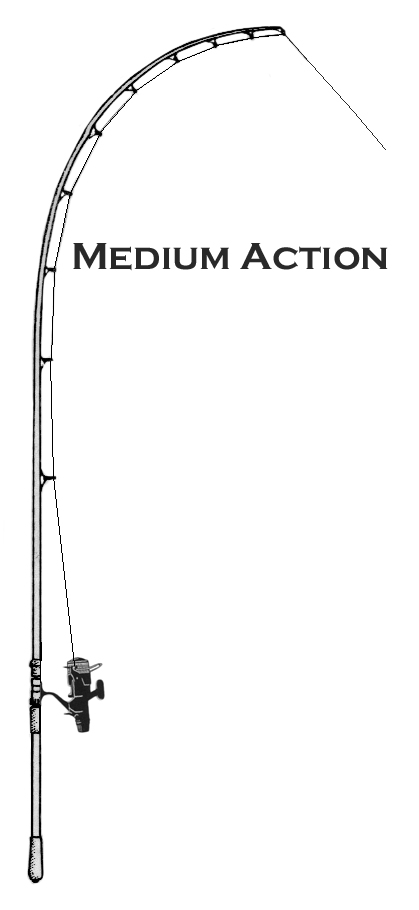
+ FAST ACTION
Fast action rods are usually higher in their test curve rating and have significantly more power on the butt and mid section of the rod to control fish at great range.
They are capable of casting heavier leads to distance however care should be taken when playing fish under the rod tip as they are far less ‘springy’ than the two previously described actions making it easier to ‘pull out’ of fish under the tip if clutches are not set appropriately.
Likewise, if you plan on using a braid for the mainline; in this case definitely use a mono shock leader which will give you both the protection/safety needed during casting heavy weights and supply a certain amount of stretch or 'give' when playing a fish...
This type of rod is also sometimes said to have a 'Fast Taper'-Tip Action.
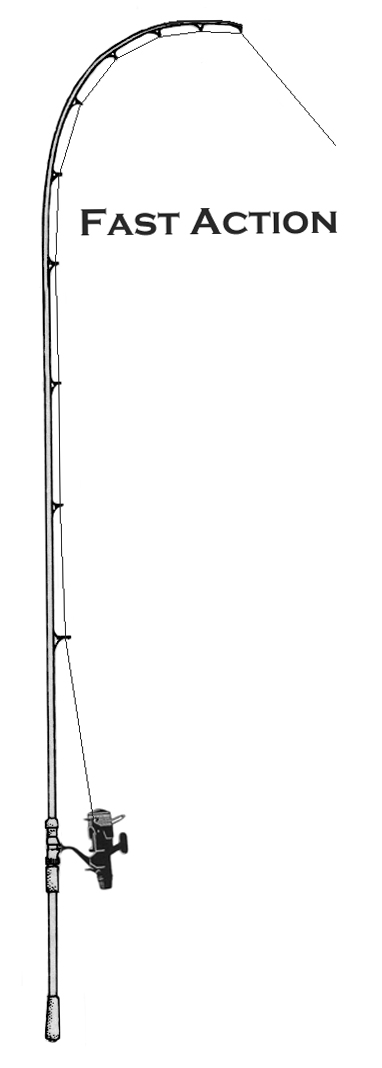
+ SPECIALIST RODS
Modern day carp anglers are facing ever changing fishing conditions. They are fishing larger venues than before and casting farther than before. If the fish are at range, then you will need to reach them to be able to entice a bite!
Many of the waters found here in the USA are extremely large and though specialist rods are not necessary to fish them all, there are some situations where they are put to very good use. If you do not own a boat, then a powerful rod will put a bait out to 150 yards in the right hands.
Years ago this would not have been an option with a Carp rod but with today’s technology and forward thinking rod manufacturers such as Free Spirit, Saxon, Harrison rods etc. and with designers such as Nick Buss, rods are breaking new ground in their power yet still maintaining extremely light weights and playing ability.
Years ago, this would not have been an option with a Carp rod but with today’s technology and forward thinking rod manufacturers such as Free Spirit, Saxon, Harrison rods etc. and with designers such as Nick Buss, rods are breaking new ground in their power yet still maintaining extremely light weights and playing ability.
+ POWER RATINGS
Carp rods are rated in something called a ‘test curve’ (tc) There has been much debate regarding the accuracy of the ‘test curve rating’ but it is still the most common measurement used to describe the ‘power’, of the rod.
One of the two following methods commonly find the test curve rating of the rod:
• Hold the rod vertical with reel and line, and hang weights on the line until the rod tip is bent to a right angle to the handle. This is the weight of the test curve.
• The other way is to pull the line at a right angle to the handle with some scales attached to the line and read the dial when tip reaches a perfect right angle to the handle.
However as there are 3 different rod actions that are commonly acknowledged, this isn’t exactly 100% accurate measurement. Many modern rods are now changing their ratings to that of the recommended maximum cast-able weight. For example, ‘3-4oz’ or ‘2-3oz’.
This may increase with popularity as the years go on.
Choosing a Rod
By far the best method for an individual choosing a rod is to use it and feel whether or not the action of the rod is one that suits them while playing a fish. This however is not always practical so some time spent with the rod fully assembled and balanced with a reel of choice will give you a good idea.
Remember that not all rods are going to be ideally suited to your individual style of fishing so take some time and make sure that you get a rod that feels right for you. It should be well balanced and have a good recovery action, meaning that regardless of the ‘action’ it isn’t ‘Sloppy’.
Your rod is likely going to be one of the most expensive items of Carp tackle that you own so as with all tackle make sure that you get the very highest quality that you can afford. A broken rod or a lost fish of a lifetime is not something that you will want to experience!
